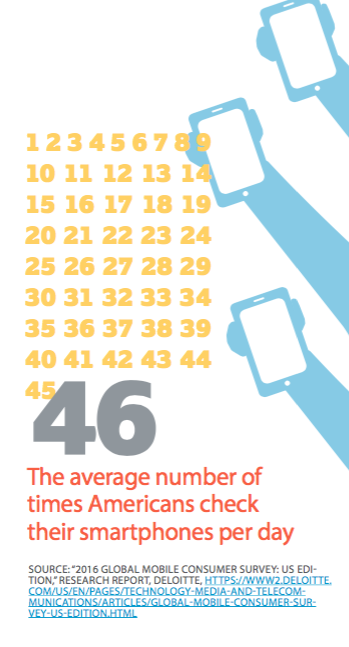The IT Innovator’s Guide to Digital Transformation in Quick-Service Restaurants

Introduction
Quick-service restaurants are transforming from the traditional “fast food joints” serving up food quickly in a no-frills environment to destination dining spots offering a bevy of extras such as WiFi, interactive menus and more. Technology is at the heart of that transformation, powering many of the features designed to draw in customers and keep them there longer.
QSRs’ evolution is, in many ways, a response to customer demand. A recent study by Technomic found that 40 percent of participants consider WiFi to be an “important” or “very important” consideration in their restaurant selection. And 65 percent of respondents said they “absolutely expect” quick-service restaurants to provide complimentary WiFi.[1] QSRs have taken note, with more than 53 percent of retailers and QSRs already having deployed in-store WiFi and 33 percent planning to deploy it over the next 24 months.[2]
It’s not just customers who are benefitting from a side of technology with their meal. Restaurants, too, are reaping rewards in the form of streamlined operations, cost savings in manpower and inventory, and more effective marketing to patrons both inside and away from the establishment.
To ensure the highest quality experience, QSRs must have a network infrastructure capable of handling customer-facing technologies and back-office technologies to create and support an exceptional patron experience.
Driver 1: In-Restaurant Experience
QSRS are embracing technology—and WiFi in particular—to draw customers in and give them a reason to stay. Indeed, free WiFi has become an almost ubiquitous benefit offered by most QSR establishments, as they understand the growing desire for patrons to stay connected via their mobile devices at all times—according to research by Deloitte, Americans check their smartphones on average 46 times per day.[3]

Other technologies are being adopted as well that both provide an enhanced patron experience and streamline operations. Digital signage, for one, has become an integral technology for restaurants in enabling fluidity in menu items and prices to meet customer demand, promote certain menu items, suggest particular food combinations or even impart necessary information to customers, such as the unavailability of certain items or food allergy warnings. Operators can add or remove items in real time based on inventory, and can change pricing on the fly to reflect customer demand.
Interactive displays, too, are finding their place in QSRs, providing an easy way for patrons to view ingredient lists, nutritional and other useful information at the touch of a screen. Other content, such as videos and games, also can be accessed to extend the user experience. What’s more, the displays also can double as recruitment kiosks, enabling users to view and apply for jobs electronically and helping simplify the hiring process for managers and franchise owners.
Similar to interactive displays, self-service kiosks are another customer convenience that also provides valuable back-end data for the restaurateur. For customers, self-ordering provides a sense of control, enabling them to customize their orders (extra lettuce, no mayonnaise) and ensuring their order request is correct. For both customer and establishment, self-service kiosks streamline the ordering process from order to payment, and decreases the number of order errors.
Driver 2: Mobile Apps
Many QSR chains have created mobile apps to help keep their brand top of mind with customers. The apps provide loyalty offers, store locations and other compelling brand information, often enabling customers to order and pay for meals using store cards or stored credit card information, among other tasks. Mobile apps can speed the transaction time to almost zero—a true benefit for customers on a tight schedule as well as for store operators to keep lines and checkout times to a minimum.
Mobile apps that include games, videos or other featured content also can keep customers engaged with the brand for longer periods, and instill or reinforce brand loyalty among those customers. With constantly updated content, customers have a reason to open the app beyond simply ordering their meals. In addition to offers, QSRs can push out relevant information, coupons, directions to nearby locations or other items of interest directly to the customer.

A number of mobile apps today are linked to customer loyalty programs, enabling QSR operators to collect valuable customer data such as average meal times, average amount spent and types of food most often ordered. This highly personalized customer information can help restaurant owners in their efforts to better target their marketing efforts and can help them better anticipate and prepare for spikes in business.
Mobile apps associated with third-party delivery services are benefitting QSRs as well, providing a much-needed service many restaurants simply don’t have the resources to perform on their own. According to home delivery service GrubHub, which conducted an economic impact study of its services, after joining GrubHub, restaurants grew their monthly takeout revenue by an average of 30 percent, and one in five restaurants doubled its revenue.[4] What’s more, the company claimed to cut restaurant processing time by more than 50 percent.
Driver 3: Big Data Analytics
The power of big data is helping companies of every ilk realize benefits never before possible, and the restaurant industry is no exception. Using big data analytics, QSRs—both franchises and company-owned—can save money and provide a stellar customer experience by understanding patrons’ behaviors and anticipating their needs.
By collecting information from rewards programs such as past purchases, times of visits and average length of stay, QSRs could develop highly personalized, targeted marketing programs, such as coupons good for a particular food item at a certain time of day. Likewise, the restaurant could push alerts to rewards members who are close to a location or close to achieving certain points status—to entice them to visit and earn more points to receive a reward.
Big data and analytics also can help QSRs spot dining trends—for example, an increasing number of customers ordering more healthful choices on certain days of the week—and adjust their menus to meet demand. Such data also can help operators plan future menu choices, including which items to drop and which ones to promote. This valuable information can be shared with other locations to aid in their menu planning.

Using data culled from just about everything— from the number of cups used per day to how many customers used the drive through versus ordered in-store—QSR operators can harness the power of big data and analytics to better control their inventory of perishable and non-perishable items, schedule more employees at peak times and even throttle their network services to accommodate more wireless users at certain times of the day.
Driver 4: Marketing
As QSRs look to bring in more customers— and drive more repeat business—marketing has become a key ingredient for success. Thanks to the data gathered by rewards programs, mobile apps and self-service kiosks, QSRs know more about their patrons today than ever before. Such knowledge is helping them create personalized marketing programs that garner attention and get results.
In addition to loyalty programs, QSRs are using a plethora of new technological capabilities to market to new and existing customers. Geofencing is another way for QSRs to personalize their marketing. The technology targets would-be customers within a certain radius of a restaurant and automatically pushes out customized offers and messages designed to increase traffic and customer loyalty. It also can be used by customers to place, manage and track orders before they enter the restaurant, which extends the patron experience and reinforces brand loyalty.

Beacons, too, are being used to further personalize the customer experience, enabling restaurants to suggest items ordered in the past or reward customers based on previous interactions and orders.
Taken together, information from beacons, geofencing and loyalty programs provide restaurateurs with a smorgasbord of customer information that, if used appropriately, can be the key to enabling high-quality customer experiences.
QSRs are also finding a voice in social media marketing, creating social promotions and communicating directly with customers. According to the Pew Research Center, 79 percent of online Americans use Facebook, while 24 percent use Twitter, 31 percent use Pinterest and 32 percent use Instagram. These and other apps are the perfect platforms for restaurants and customers to interact, putting their conversations in front of scores of other app users and increasing their visibility exponentially.
Having the Right Network
The network is a critical element in delivering an exceptional experience, no matter what size restaurant. As such, the network should provide high availability, high bandwidth and redundancy, and it should scale to move data effectively to-and-from each restaurant site, keeping systems, inventory and processes up to date across a distributed enterprise of multiple geographic locations.
QSRs should look for a network service provider that can provide a secure, high-performance network that can be adjusted according to bandwidth needs. A good network service provider will address current demands and anticipate future needs to guarantee the restaurant can continue to provide its customers with loyalty-enhancing interactions, both online and in-restaurant, in every location.
To provide services that meet the needs of today’s digital-focused customers, restaurants should work with service providers that can support a full line of dedicated, broadband and WiFi connectivity services, ensuring an always-on, always-connected environment that works for everyone.
Look for a network provider that can handle every aspect of the network, from provisioning to management and field technology services, for installation, maintenance and repairs. That helps restaurants focus on providing the best customer experience possible, instead of tending to their networks.
Read The IT Innovator’s Guide to Digital Transformation in Quick-Service Restaurants in PDF form.
Photo via Visualhunt.com
[1] Julie Ritzer Ross, “Restaurants Add Free Wi-Fi to the Menu,” http://hospitalitytechnology.edgl.com/news/Restaurants-Add-Free-Wi-Fi-to-the-Menu99463 (April 8, 2015).
[2] Sahir Anand, “Building a New Digital Foundation for Retail and QSR with Wi-Fi,” http://eknresearch.com/2016/01/22/building-a-new-digital-foundation-for-retail-and-qsr-with-wi-fi/ (January 22, 2016).
[3] Deloitte, “2016 Global Mobile Consumer Survey: US Edition,” https://www2.deloitte.com/us/en/pages/technology-media-and-telecommunications/articles/global-mobile-consumer-survey-us-edition.html.
[4] “The GrubHub Economic Impact Study 2015,” http://economicimpact.grubhub.com/pdf/grubhub-economic-study.pdf (October 2015).
Quick-service restaurants are transforming from traditional “fast food joints” to destination spots offering a bevy of extras, including a side of technology.
Locked Content
Click on the button below to get access
Unlock NowOr sign in to access all content on Comcast Business Community
Learn how Comcast Business can help
keep you ready for what's next.











